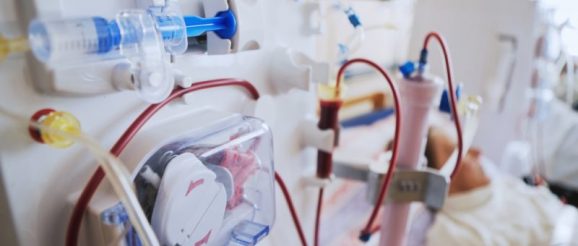Green innovation in kidney care critical for both patients and planet – EURACTIV.com

Invented more than 50 years ago, dialysis is a key part of treatment for kidney disease and continues to demand a large amount of resources. Now the conversation is turning to ways to make kidney treatment greener.
Around 600 million people worldwide have some form of kidney damage. Chronic kidney disease increases the risk of heart attack and stroke, and in some cases can progress to kidney failure, requiring dialysis or transplantation.
And this number is set to rise over the coming years, with its global prevalence predicted to increase by 17% over the next decade.
With the increasing pressure on the kidney care system, stakeholders have also started to consider ways to green the resource-intensive sector.
Speaking at the recent European Kidney Forum, Hilde Vautmans, Chair of the MEP Group for Kidney Health, highlighted that kidney treatment is in desperate need of updating with a focus on green innovations.
“I’m well aware of challenges kidney patients have to face. However, I continue to be shocked to see that kidney replacement therapies have barely evolved since their development more than 50 years ago,” she said.
Every dialysis requires 4-500 litres of water which later disappears down the drain, explained Raymond Vanholder, president of the European Kidney Health Alliance (EKHA). This amounts to 4-5 million litres of water for one average-sized dialysis unit per year.
Meanwhile, dialysis also requires a lot of energy to run and results in large amounts of single-use plastic waste, while people have to be transported to the units – sometimes over long distances.
“Things have remained unchanged for too long,” Vanholder said, calling for more and better innovation in the field.
To help the sector evolve and adapt, Emily Petrides, vice-president of the European Kidney Patients’ Federation (EKPF) urged the creation of more and better incentives for innovation – both for the environment and the quality of life of patients on dialysis.
“Dialysis is not a treatment. It is merely a prolongation of life, keeping patients confined to the machines’ support in a Sisyphean cycle until the patient either wins the lottery and receives a transplant or [their] life comes to an end,” she said adding that dialysis is in desperate need of innovation and re-engineering.
According to Petrides, the way forward is through “early detection protocols, awareness, disease management and above all, funding and investment for research”.
Although not included in the EU’s list of major non-communicable diseases, chronic kidney disease (CKD) will benefit from an ‘indirect’ impact of the work on other conditions that share common risk factors, according to the European Commission.
Aiming for lower-hanging fruit
But in the meantime, several speakers pointed to a number of practical steps that can already be taken to help reduce the amount of resources needed for dialysis.
Drawing on his experience in a centre in Leeds, in the UK, Mark Harber, consultant nephrologist at the Royal Free Hospital in London, stressed that there is a big responsibility to cut down where we can until better options are invented.
The centre has put in place systems to use water discarded after dialysis in toilets and other places, a move which he said has saved them 16 million litres of water a year.
Meanwhile, when it comes to large amounts of plastic waste, he suggests looking at procurement.
“The EU is in a great position to talk to these manufacturers and say what we need,” Harber pointed out, reiterating the same solution for the machines’ large use of energy.
Portable artificial kidney is perceived as the next big thing in the field of home treatment that could stop dialysis being a full-time job for patients, but barriers to its rollout persist.
Proactive, not reactive
Others pointed out that the most sustainable solution for both the patient and the environment is to invest in ways to prevent the onset of lifestyle related kidney disease or, if the damage is already done, place more focus on transplants. But, of course, kidneys come in limited supply.
Organ shortage is a big challenge for Europe: on average, an estimated 18 patients die each day while on the waiting list for a transplant.
One promising solution is the creation of synthetic kidneys, grown by scientists in laboratories using human skin fibroblast or blood cells.
When asked about these lab-grown kidneys, Fokko Wieringa, principal scientist at the Dutch research centre Imec, said that “if this would be the new Playstation, we’d already have it”.
“It is about the return on investment for society, but also for the firms that invest into it. At this moment, dialysis is a nice cash cow,” he said, adding that what is needed is “the consciousness that dialysis, as it is now, will become unsustainable.”
Several labs in Europe are growing mini-kidneys to be used for disease modelling, in the hope that in the future, they can be used as transplants for those in need.
[Edited by Natasha Foote and Benjamin Fox]
